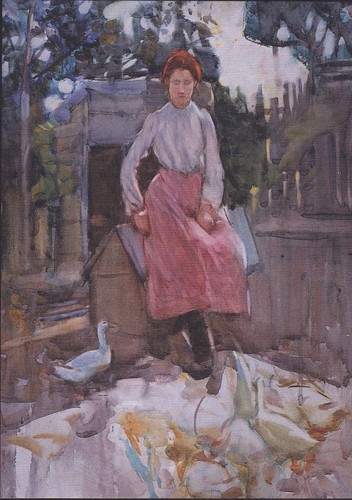Yesterday I dropped in on an interesting exhibition at Wellington's National Portrait Gallery – Frances Hodgkins: People. Hodgkins, though she spent much of her life in England and various parts of Europe, was born and raised in Dunedin and began her career in New Zealand. She was in her thirties when in 1901 she first sailed for England and subjected herself to the various cross currents of European art.
The effect was soon apparent in such works as Babette [below], a delicate, Whistler-influenced study spoilt only by that clumsy hand that seems to belong to someone else.
Throughout her career, Hodgkins seems to have had problems drawing hands and often fudged them – a strange shortcoming in an artist with a terrific natural gift for catching a likeness and making something strongly expressive of it, as in the intentionally harrowing Belgian Mother and Child (painted in 1914). This painting [below] also shows Hodgkins' extremely loose and free brushwork.
This exhibition is limited to portraits, so gives a necessarily incomplete picture of Hodgkins' oeuvre, but it shows clearly enough how open the artist was to just about every trend in European art, some of which came less naturally to her than others. Not all the pictures on show are successful, but the best of them are really very fine, especially some of the double portraits – something of a Hodgkins speciality. Below is Bridesmaids, a particularly bold and striking work. It takes a brave portraitist to dress two sitters in such a strong green – but it works.
After a long, prolific and successful career – which, but for the war, would have included representing Britain in the 1940 Venice Biennale – Frances Hodgkins died in Dorchester in 1947.
The painting at the head of this post is Hodgkins' distinctive take on that ever popular subject The Goose Girl.
Subscribe to:
Post Comments (Atom)




Very nice, not heard of her before. Thanks Nige.
ReplyDelete